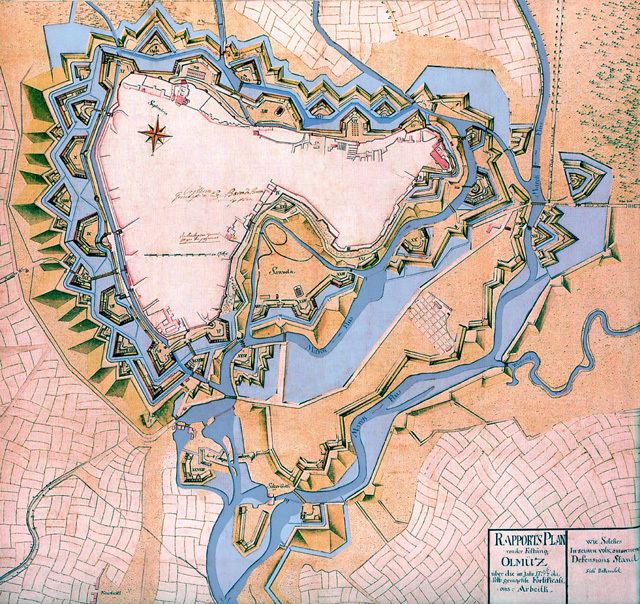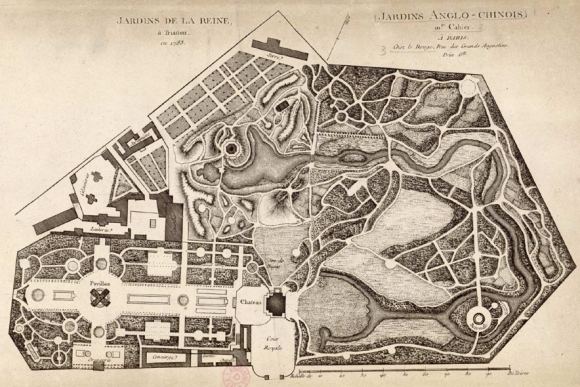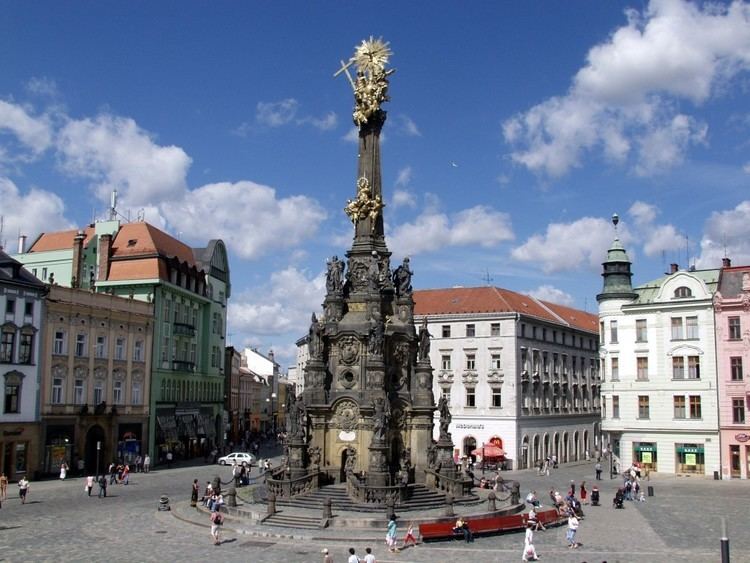Area 103.4 km² Population 100,233 (2011) University Palacky University, Olomouc | ||
Points of interest Saint Wenceslas Cathedral, Holy Trinity Column in Olomouc, Hradisko Monastery, Church of Saint Maurice, Church of Saint Michael | ||
Olomouc ( locally or ; German: ; Latin: Olomucium or Iuliomontium; Polish: ) is a city in Moravia, in the east of the Czech Republic. Located on the Morava River, the city is the ecclesiastical metropolis and historical capital city of Moravia. Today it is an administrative centre of the Olomouc Region and sixth largest city in the Czech Republic. The city has about 102,000 residents, and its larger urban zone has a population of about 480,000 people.
Contents
- Map of Olomouc
- Olomouc czech republic a taste of moravia
- History
- Culture
- In popular culture
- Czech food a restaurant in olomouc
- References
Map of Olomouc
Olomouc czech republic a taste of moravia
History

Olomouc is said to occupy the site of a Roman fort founded in the imperial period, the original name of which, Iuliomontium (Mount Julius), would be gradually corrupted to the present form. Although this account is not documented except as oral history, archaeological excavations close to the city have revealed the remains of a Roman military camp dating from the time of the Marcomannic Wars of the late 2nd century.

During the 6th century, Slavs migrated into the area. As early as the 7th century, a centre of political power developed in the present-day quarter of Povel (in lowland, south of the city centre). Around 810 the local Slavonic ruler was defeated by troops of Great Moravian rulers and the settlement in Olomouc-Povel was destroyed.
A new centre, where the Great Moravian governor resided, developed at the gord at Predhradi, a quarter of the inner city (the eastern, smaller part of the medieval centre). This settlement survived the defeat of the Great Moravia (c. 907) and gradually became the capital of the province of Moravia.
In 906 the first Jews settled in Olomouc. In 1060 they were forced into a ghetto and instructed to wear a yellow badge.
The bishopric of Olomouc was founded in 1063; centuries later in 1777, it was raised to the rank of an archbishopric. The bishopric was moved from the church of St. Peter (since destroyed) to the church of Saint Wenceslas in 1141 (the date is still disputed, other suggestions are 1131, 1134) under bishop Jindrich Zdik. The bishops palace was built in the Romanesque architectural style. The bishopric acquired large tracts of land, especially in northern Moravia, and was one of the richest in the area.
Olomouc became one of the most important settlements in Moravia and a seat of the Premyslid government and one of the appanage princes. In 1306 King Wenceslas III stopped here on his way to Poland. He was going to fight Wladyslaw I the Elbow-high to claim his rights to the Polish crown and was assassinated. With his death, the whole Premyslid dynasty died out.
The city was officially founded in the mid-13th century and became one of the most important trade and power centres in the region. In the Middle Ages, it was the biggest town in Moravia and competed with Brno for the position of capital. Olomouc finally lost after the Swedes took the city and held it for eight years (1642–1650).
In 1454 the city expelled its Jewish population as part of a wave of anti-Semitism, also seen in Spain and Portugal. The second half of the 15th century is considered the start of Olomoucs golden age. It hosted several royal meetings, and Matthias Corvinus was elected here as King of Bohemia (in fact anti-king) by the estates in 1469. In 1479 two kings of Bohemia (Vladislaus II and Matthias Corvinus) met here and concluded an agreement (Peace of Olomouc of 1479) for splitting the country.
Participating in the Protestant Reformation, Moravia became mostly Protestant. During the Thirty Years War, in 1640 Olomouc was occupied by the Swedes for eight years. They left the city in ruins, and it became second to Brno.
In 1740 the town was captured and briefly held by the Prussians. Olomouc was fortified by Maria Theresa during the wars with Frederick the Great, who besieged the city unsuccessfully for seven weeks in 1758. In 1848 Olomouc was the scene of the emperor Ferdinands abdication. Two years later, Austrian and German statesmen held a conference here called the Punctation of Olmutz. At the conference, they agreed to restore the German Confederation and Prussia accepted leadership by the Austrians.
In 1746 the first learned society in the lands under control of the Austrian Habsburgs, the Societas eruditorum incognitorum in terris Austriacis, was founded in Olomouc to spread Enlightenment ideas. Its monthly Monatliche Auszuge was the first scientific journal published in the Habsburg empire.
Largely because of its ecclesiastical links to Austria, Salzburg in particular, the city was influenced by German culture since the Middle Ages. Demographics before censuses can only be interpreted from other documents. The towns ecclesiastical constitution, the meetings of the Diet and the locally printed hymnal, were recorded in the Czech language in the mid-16th and 17th centuries. The first treatise on music in Czech was published in Olomouc in the mid-16th century. The political and social changes that followed the Thirty Years War increased the influence of courtly Habsburg and Austrian/German language culture. The "Germanification" of the town likely resulted from the cosmopolitan nature of the city; as the cultural, administrative and religious centre of the region, it drew officials, musicians and traders from all over Europe.
Despite these influences, the Czech language dominated, particularly in ecclesiastical publications throughout the 17th and 18th centuries. When the Austrian-born composer and musician Philip J. Rittler accepted a post at the Wenceslas Cathedral in the latter 17th century, he felt it necessary to learn Czech. With the continued dominance of the Habsburgs and migration of ethnic Germans into the area, the use of Czech declined. By the 19th century, the number of ethnic Germans in the city were recorded as three times higher than the number of Czechs.
After the 1848 revolution, the government rescinded its Jewish expulsion order of 1454. Jews returned to the city and, in 1897, built a synagogue. The Jewish population reached 1,676 in 1900.
Olomouc retained its defensive city walls almost until the end of the 19th century. This suited the city council, because demolishing the walls would have allowed for expansion of the city and attracted more Czechs from neighbouring villages. The city council preferred Olomouc to be smaller and predominately German. Greater expansion came after World War I and the establishment of Czechoslovakia. Olomouc annexed two neighbouring towns and 11 surrounding villages, gaining new space for additional growth and development.
Serious tensions arose between ethnic Czechs and Germans during both world wars. During WWII, most of the towns ethnic German residents sided with the Nazis; the German-run town council renamed the main square after Adolf Hitler. World War II brought a rise in anti-semitism and attacks on the Jews that reflected what was happening in Germany. On Kristallnacht (10 November 1938), townspeople destroyed the synagogue. In March 1939, city police arrested 800 Jewish men, and had some deported to the Dachau concentration camp. During 1942–1943, ethnic Germans sent the remaining Jews to Theresienstadt and other German concentration camps in occupied Poland. Fewer than 300 of the towns Jews survived the Holocaust.
After Olomouc was liberated, Czech residents took back the original name of the town square. When the retreating German army passed through the city in the final weeks of the war, they shot at its 15th-century astronomical clock, leaving only a few pieces intact (these are held in the local museum). In the 1950s, the clock was reconstructed under the influence of Soviet government; it features a procession of proletarians rather than saints. After the war, the government participated in the expulsion of ethnic Germans from the country, following the Allied leaders Potsdam Agreement, which redefined the Central European borders, although many of these peoples families had lived for two centuries in the region.
Despite its considerable charms, Olomouc has not been discovered by tourists in the same way that Prague, Cesky Krumlov and Karlovy Vary have. Its inner city is the second-largest historical monuments preserve in the country, after Prague.
Culture

The city is the home of the Moravian Theatre and the Moravian Philharmonic. Olomouc is the center of Hanakia.
